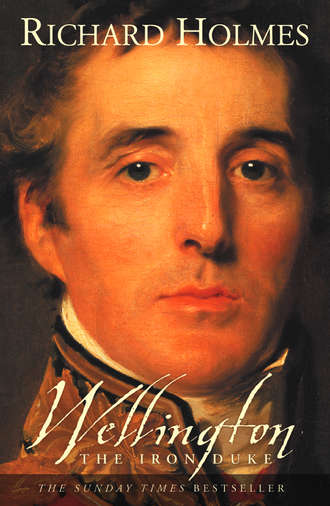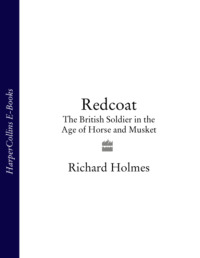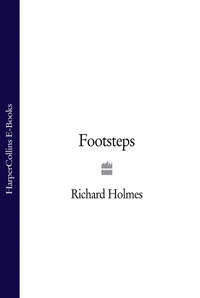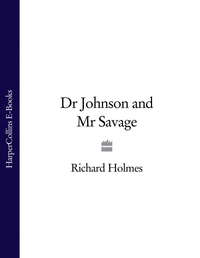
Полная версия
Wellington: The Iron Duke
The low regard in which the army was held stemmed partly from the fact that, in the absence of a police force, it was frequently called upon to preserve order in a harsh and brutal society. We connect to the Georgian age through its surviving artefacts, and it is easy to forget that, just as a classical front with its long windows and smart portico had often been stuck onto an altogether less elegant building (Dangan Castle is a good example), so old, ugly undercurrents rippled on through the eighteenth century and often into the nineteenth. Executions were held in public throughout Wellington’s lifetime. Traitors were hanged, drawn and quartered: partly strangled, then cut down alive to be castrated and disembowelled before their entrails were burnt and their bodies cut into four. There was, however, growing resistance to such savagery. After the Jacobite rebellion of 1715, victims of this ghastly punishment were revived after hanging to be ‘bowelled alive and seeing’, but after the 1745 rebellion they were hanged till they were dead, or knifed by the executioner before the butchery began. Those involved in the Cato Street Conspiracy of 1820, who had planned the murder the cabinet, of which Wellington was a member, were merely beheaded after death, and the mood of the crowd grew ugly as the executioner sawed away at spines and sinews.
Even straightforward hanging did not guarantee a quick death, and the victim’s friends would often rush forward to pull on his legs and hasten death. Bodies were usually sent to the surgeon’s hall for dissection, although they might be gibbeted in some appropriate place as a warning to others: the body of Maria Phipoe, a murderess hanged in 1797, was displayed outside the Old Bailey. There was an odd democracy to the business. In 1760 Earl Ferrers, convicted of murder by the House of Lords, was duly hanged and then dissected, but he went to Tyburn in a landau drawn by six horses rather than the common cart, and died so well that the mob, fickle as ever, showed more sympathy than anger.11
Many popular ‘sports’ were dangerous and brutal. Bull- and bear-baiting were popular, and noblemen jostled with kitchen-porters in drunken, sweaty cockpits where fighting cocks, their natural talons reinforced with spurs wrought in the best of Georgian taste, fought to the death. A French visitor, César de Saussure, observed that the populace enjoyed ‘throwing dead dogs and cats and mud at passers-by’ as well as playing football, in the process of which ‘they will break panes of glass and smash the windows of coaches and also knock you down without the smallest compunction …’12
As the eighteenth century wore on, there was a growing number of violent reactions to economic fluctuations: a depression in the textile industry triggered rioting in Spitalfields in 1719, and there were very serious food riots in Somerset and Wiltshire in 1766–67. But as the country faced a sequence of economic recessions with the transition from war to peace at the end of the Seven Years War and the War of American Independence, rioting became more serious and the ruling elite increasingly saw it as a threat to its hold on power.
The climax came in 1780 when the unsteady anti-Catholic Lord George Gordon gained widespread support, much of it from the ‘middling sort’ of men who coincidentally also favoured political reform, in his demand for the repeal of an act of 1778 which had removed some of the restraints on Catholics. When parliament rejected his petition, there was an outbreak of violent disorder. It began with attacks on Catholic chapels attached to foreign embassies (the only ones legally allowed), and then, more seriously, went on to take in all the law’s visible manifestations like the houses of prominent judges and magistrates and Newgate prison itself. This was evidently an assault on the establishment, and the government brought over 11,000 regular soldiers into the capital. Almost 300 rioters were shot, another 25 were hanged. Not only was the government badly rattled by the sheer scale of the violence, but many middle-class radicals who had supported Gordon (himself cleared of high treason), were so frightened by the spectre of the mob that they shied away from reform thereafter.
Both the regular army and the less reliable militia played a leading role in the preservation of order, and in doing so found themselves execrated by the populace and at risk of prosecution for murder if they killed anybody. In 1736 Captain John Porteous of the Edinburgh Town Guard ordered his men to fire on a crowd that indulged in stone-throwing at an execution, killing five or six. He was condemned to death for murder, and although he received a royal pardon, the mob burst into his prison, dragged him out, and lynched him. As the English constitutional lawyer Dicey put it:
The position of a soldier may be, both in theory and in practice, a difficult one. He may, as it has been well said, be liable to be shot by a Court-Martial if he disobeys an order, and to be hanged by a judge and jury if he obeys it.13
There was an added shade of complexity. Jurors were, by definition, men of property, and while the military could shoot rioting weavers or colliers without much risk, matters were different if their victims were middle-class men with whom a jury might sympathise. In 1768 a magistrate ordered troops to fire on a crowd supporting the reformer John Wilkes: six were killed and fifteen wounded. The magistrate was tried for murder but acquitted by the judge before a jury (far more likely to take a hostile line) was empanelled, and it followed that the troops themselves could then not be convicted. The Gordon riots, however, aroused no middle-class sympathy. Troops were eventually given carte blanche, and duly dealt with the mob by volley-firing more suitable for a conventional field of battle.
Whatever the importance of its forays to bolster the civil power, the army was designed for use on battlefields and was shaped by the flintlock musket, the weapon carried by the bulk of the armies of the age. And while there were changes in the theory and practice of war during Wellington’s lifetime – for instance the development of the corps d’armée system by Napoleon, and the increasing use of light troops, like the 95th Rifles who earned such lustre in the Peninsula – there was more continuity than change.
It was the age of the flintlock. In the early eighteenth century the flintlock musket, its charge ignited by the sparks flashing out when flint struck steel, at last replaced the matchlock, which had relied on a length of smouldering cord. To load his musket the soldier tore open a paper cartridge with his teeth – a blackened mouth and brick-dry throat were amongst the lesser hazards of battle – and dribbled some powder into the priming pan of his musket, shutting the pan off by snapping a hinged striking-plate, the steel, across it. He then tipped the remainder of the powder down the weapon’s muzzle, following it with the round lead musket ball and then the empty cartridge, ramming it all firmly home. To fire, he first drew back the cock, which held a flint gripped firmly in its steel jaws. When he pressed the trigger the flint snapped forward to strike the steel, which swung forward, uncovering the pan. Sparks ignited the priming powder, which flashed through the touch-hole to ignite the main charge.
Misfires were common. Flints had a life of twenty or thirty shots and gave little warning of imminent failure: they simply failed to spark and had to be replaced. Sometimes flint and priming-powder both did their job, but resulted only in a ‘flash in the pan’ which did not ignite the charge. And even when the weapon did fire, it was shockingly inaccurate. In 1814 Colonel George Hanger suggested that although a musket might hit a man at 80 or even 100 yards, a man would be very unlucky indeed to be hit at 150 yards by the man who aimed at him. And that, of course, was the catch, for most infantry soldiers aimed not at individuals but at the mass of the enemy’s line. A Prussian experiment on a canvas target 100 feet long and 6 feet high demonstrated that there were only 23 per cent hits at 225 yards, 40 per cent at 150 yards and 60 per cent at 75 yards. In 1779 a battalion of Norfolk militia, many of its members no doubt more handy with the plough than the musket, hit a similar target with 20 per cent of its shots at 70 yards. These experiments were exactly that, and with an enemy returning fire, results in battle were likely to be far worse. With such a weapon, the volume of fire counted for more than its accuracy, and recruits were drilled repeatedly until the sequence of loading had become second nature and they could fire three or even four shots a minute. Drill was also important in enabling them to move forward in columns, the usual formation for covering the ground, and then to deploy into line so that the maximum number of muskets be brought to bear.
It was axiomatic that good infantry, drawn up in suitable formation (squares or oblongs were ideal) on favourable ground, should be able to resist the attack of cavalry. Although the cavalry of the age still sought to charge whenever possible, it often rendered more useful service by dealing in the small change of war. Cavalry in general, and especially light cavalry, provided a framework of pickets which screened armies in camp or on the march. Although Wellington figured briefly in the Army List as a light dragoon, he was never a real cavalry officer, and rarely showed the arm much sympathy, complaining that its officers had a trick of ‘galloping at everything’. Recent research has shown that he was as unfair in this as in some of his other sweeping judgements, and the achievements of the cavalry which served him were by no means derisory.14
Artillery had already begun its long rise that was to end in it dominating the battlefield a generation after Wellington’s death. Cannon were categorised by the weight of the iron roundshot they fired, with handy 6-pdrs to heavy 12-pdrs forming the mainstay of field artillery and more cumbersome pieces, like 24-pdrs and 32-pdrs, taking pride of place when it came to battering the walls of fortresses. The roundshot, pitched to hit the ground just in front of its target and then to ricochet through the enemy’s formation smashing limbs and striking off heads at every bound, was the most common projectile, with an effective range of about 800 yards and a maximum range of perhaps twice that. At close range gunners switched to canister, a circular tin containing a number of lead or iron balls. The tin burst open when it left the muzzle, turning the cannon into a giant shotgun. Almost half the balls from a British 6-pdr would hit a large target at 400 yards, making canister a lethal weapon. One of my abiding memories of the battlefield of Assaye is the sheer prevalance of canister shot, from small shot the size of a thumb-nail to big shot the size of a golf-ball. The path of the Maratha gun-line could almost be traced by the battalions of urchins pressing canister upon the unwary visitor.
A third artillery projectile, spherical case – known in the British service as shrapnel after its inventor, Lieutenant Henry Shrapnel of the Royal Artillery – consisted of an iron sphere filled with powder and musket-balls. The shell was ignited by a fuse composed of tightly-packed powder in an ash or beech plug; bursting range was regulated by cutting the end off the fuse.
Cannon, like infantry muskets, were muzzle-loading throughout Wellington’s service. They were horse-drawn, with field guns requiring teams of six or eight horses. In most artillery units the gunners marched behind their pieces, but in horse artillery, designed to keep pace with, and cross the same country as cavalry, all gunners rode. Finally, the rocket made a brief and inglorious appearance in the British army during the Napoleonic Wars, but it was not deemed a success, and Wellington in particular had poor regard for it. When told that sending a rocket troop away would break its commander’s heart, he snapped: ‘Damn his heart: let my orders be obeyed.’
The Georgian army was a mirror of the state it served. It was heterogeneous, decentralised and riddled with patronage and perquisite. The commander-in-chief at Horse Guards in Whitehall presided over the household troops (horse and foot guards), and the infantry and cavalry of the line. He was, however, subject to political control, itself unevenly applied by the two cabinet ministers with primary responsibility for military matters – the secretary of state for war and the colonies, and the secretary at war. The monarch also took an interest in military affairs, regarding the household troops as a personal preserve, and often becoming involved in that most fecund of royal pursuits, the design of uniform. Artillery and engineers were the creatures of the master-general of the ordnance, usually a peer with a seat in the cabinet, and proved the point by wearing blue uniforms rather than the red which characterised most of the rest of the army. Wellington served on both sides of the fence, both as commander-in-chief and as master-general of the ordnance, an unusual distinction.
The heavy hand of the Treasury lay on the whole machine, for it controlled the commissariat which was responsible for supplying the army with most of what it required in peace and war, although its representatives were regarded as civilian officials rather than military officers. Yet even here there was little consistency, for some items (soldiers’ water bottles, for instance), were supplied by the board of ordnance and stamped with its initials, BO, and others, like uniforms and some accoutrements, were supplied to regiments by their colonels. The latter were actually not colonels at all, but generals given the appointment as a reward or as the equivalent of a pension. Wellington became colonel of the 33rd Regiment in 1806, and remained colonel of a regiment until he died. They purchased their regiment’s requisites, using a government grant which they often managed to under spend by economising on the quality of cloth from which uniforms were made or the frequency with which items were replaced.
Artillery and engineer officers were commissioned after attending the Royal Military Academy at Woolwich, and were thereafter promoted by inexorable seniority. In the infantry and cavalry, however, colonels were intimately concerned in the selection and promotion of the officers in their regiments. About two-thirds of commissions in these arms were purchased, although during major wars it was difficult to find sufficient young men whose relatives were prepared to buy the fortunate youth an accelerated chance of an early death: in 1810 only one fifth of all commissions were bought. An individual wishing to buy a commission had to pay the government the regulation price, adding a non-regulation bonus to the officer he was replacing, using the colonel’s representative, the regimental agent, as his intermediary. Regulations on promotion grew increasingly tight during Wellington’s lifetime, and the Duke of York, commander-in-chief 1798–1808 and 1811–1827, forbade commissioning youths under the age of sixteen. He also established time limits that prevented an officer becoming a captain with less than two year’s service and a major with less than six, increasing these limits to three and nine years in 1806.
Up to the rank of lieutenant colonel, promotion was regimental. A normal peacetime vacancy for a captain, arising because an officer had decided to retire on half-pay, would be offered to the senior lieutenant. If he could afford it, all well and good: if not, the offer was made to the next senior, and so on. The promotion of a lieutenant opened an opportunity for the promotion of an ensign, which was filled in the same way. An astute young man with money behind him could slip from regiment to regiment as opportunities arose, obtaining seniority in an unfashionable regiment and transferring back, in his new rank, to his old regiment, provided its colonel was kept sweet. When officers were killed in action or died of wounds, however, the vacancy was filled by seniority alone: it was small wonder that the ambitious but impecunious drank to ‘a bloody war or a sickly season’.
In practice, more commissions were granted without purchase than ought to have been the case, and an applicant’s ability to bring influence to bear was crucial. Control of a family parliamentary seat, support for the ministry in Commons or Lords, past favours or future promises all helped secure an epaulette. Sometimes a young man could make his way by courage alone. Gentleman volunteers attached themselves to a regiment, messing with its officers but serving as private soldiers, hoping to distinguish themselves and gain a free commission.
Promotion beyond lieutenant colonel was by seniority within the army as a whole. An officer who made lieutenant colonel was bound to die a general if he lived long enough, but there was no guarantee that he would be employed as a general even if he gained the rank. There were always more generals than there were jobs, and officers steadily notched their way up from major general to lieutenant general and so to general, even if they never actually served in any of these ranks. Promotion for a man with neither contacts nor particular talent was a mixed blessing: he might find himself a major general, living at home on his half-pay as lieutenant colonel, waiting for a call which never came.
Arthur Wesley had his own call to arms in 1786, when he was sent to the Royal Academy of Equitation in the French town of Angers. The school’s register describes him as ‘Mr Wesley, gentilhomme Irlandais, fils de Mylaidi Mornington.’ With his friends Mr Walsh and Mr Wingfield, sons of Lords Walsh and Powerscourt, the ‘groupe des lords’, Wesley was entertained by local noble families, and made a good impression on M. de Pignerolle, the academy’s director, who described him as ‘an Irish lad of great promise’. Yet he was still noticeably frail and was often not well enough to ride, but spent happy hours on the sofa, playing with his terrier Vick. He was never really fond of dogs, but made an exception for terriers. When in India he had a white terrier called Jack which, badly frightened when a salute was fired, made its own way over a hundred miles home.
Angers taught him three things. He became a good horseman, albeit, despite the Academy’s motto of ‘Grace and Valour’, more practical than he was elegant. His French was in much the same style, because although his vocabulary and grammar were good enough, he tended to take the language by frontal assault: somebody later remarked that he spoke French as he fought them, bravement. His French stood him in good stead in a Europe where French was the language of diplomacy and the arts, and his comparative fluency eluded all too many of his countrymen. In 1814 his senior aide-de-camp, Colin Campbell, was disputing possession of an umbrella with the mayor of Bordeaux after a civic reception. Campbell tugged, bowed, and declared ‘c’est moine’.15 Lastly, in these formative years, Wesley was influenced by gentlemen like M. de Pignerolle; old-style royalists who owed proud allegiance to a notion of absolute monarchy whose days were already numbered. Elizabeth Longford recounts a telling anecdote. In 1840, at a dinner in Apsley House, his London home, the duke gazed at portraits of Louis XVIII and Charles X in all their finery, and said to Lord Mahon: ‘How much better, after all, these two look with their fleurs de lys and Saint-Esprits, than the two corporals behind or the fancy dress in between.’ The corporals were Tsar Alexander I of Russia and King Frederick William III of Prussia in uniform, and the fancy dress was George IV in full Highland fig.16
When Wesley returned to England in late 1786 his mother was astonished at the improvement in ‘my ugly boy Arthur’. But he had to be found a job, and the family was still short of money. His brother Mornington immediately wrote to the Duke of Rutland, lord-lieutenant of Ireland.
Let me remind you of a younger brother of mine, whom you were so kind as to take into your consideration for a commission in the army. He is here at this moment, and perfectly idle. It is a matter of indifference to me what commission he gets, provided he gets it soon.17
Mornington was already a rising man, with a seat in the Westminster parliament and brother William sitting for the family seat of Trim in the Irish Commons: it was in Rutland’s interest to indulge him. A commission in the cavalry or foot guards might have been more than the market would bear, as Mornington must have known. But a junior regiment in India was another matter altogether, and on 7 March 1787, shortly before his eighteenth birthday, Arthur Wesley was gazetted ensign in the 73rd Highland Regiment of Foot. Mornington continued to pluck the harp-strings of patronage: in October that year he induced the new lord-lieutenant, Lord Buckingham, to appoint Arthur one of his aides-de-camp on ten shillings a day (almost twice his daily pay as an ensign), and on Christmas day 1787, he became a lieutenant in the 76th Regiment. An attempt by the secretary at war to economise by putting all aides-de-camp on half-pay caused some fluttering, but the scheme was soon dropped. Arthur now transferred to the 41st Regiment, as the 76th had been designated for service in the unhealthy East Indies. He set off for Ireland in January 1788, and on his way visited those ‘inseparable friends’, the Ladies of Llangollen, who had been told by his excited mother that:
There are so many little things to settle for Arthur who is just got into the army and is to go to Ireland in the capacity of Aid De Camp to Lord Buckingham, and must be set out a little for that, in short I must do everything for him and when you see him you will think him worthy of it, as he really is a very charming young man, never did I see such a change for the better in anybody. He is wonderfully lucky, in six months he has got two steps in the army and appointed Aid De Camp to Lord Buckingham which is ten shillings a day.18
Lady Dungannon accompanied him to see the ladies, one of whom reported on him as: ‘A charming young man. Handsome, fashioned tall, and elegant.’
What charmed rural Wales did not appear to such advantage in more cosmopolitan Dublin, and Lady Buckingham called Arthur and his fellow aides, ‘the awkward squad’. Arthur ordered supper for the vicereine and her ladies, picked up flowers knocked over by a bearish nobleman, was dubbed ‘a mischievous boy’ by an irritated picnic guest, and was abandoned by a beauty at a ball when his small-talk ran dry. He had gambled at Angers, and bet more deeply in Dublin, winning 150 guineas, close to a year’s pay, from ‘Buck’ Whaley by walking from Cornelscourt to Leeson Street in under an hour. He lodged on Lower Ormond Quay, and his landlord, a boot-maker, lent him money when some of his other bets did not turn out as well. In later life he told George Gleig that debt: ‘Makes a slave of a man. I have often known what it was to be in want of money, but I never got helplessly into debt.’19 Gleig deferentially assumed that his hero did not get into debt at all, but it is truer to say that in borrowing, as in war, he never over-extended himself completely (though there were tense moments), and an aide-de-camp’s credit was good in the bright Dublin summer of 1789. Yet news of the French Revolution cast a shadow over the gaiety. ‘A’n’t you sorry for poor dear France,’ wrote his sister Anne, now expediently married to a peer’s son. ‘I shall never see Paris again.’20
Wesley was still not firmly set on his career. Although he spoke of trying to take his new profession seriously, much later in life he rebutted John Wilson Croker’s assertion that it was at the very beginning of his career that he ‘had a private soldier & all his accoutrements & traps separately weighed, to give you some insight into what the man had to do & his power of doing it’.21 He transferred to the 12th Light Dragoons, still as a lieutenant, in June 1789, but far from devoting himself to the intricacies of his new arm, he dipped a reluctant toe into politics. Brother William had been found a seat in Westminster, and Arthur was destined for Trim, the family borough in Ireland. It was not an easy time to venture into Irish politics, for the tide of nationalism was sweeping across the country. The American War and its Declaration of Independence in 1776 had repercussions for Ireland. There were clear similarities between the position of Ireland and England’s colonies in North America, and when France and Spain entered the war against Britain, Ireland, denuded of regular troops, was a likely target for a hostile expedition. Many Irishmen, from the Protestant minority for the most part, joined volunteer military units, and were soon complaining about the commercial restrictions imposed on Ireland and questioning the right of the Westminster parliament to legislate for it.









